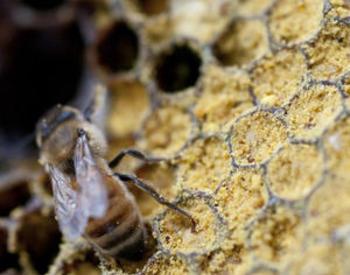iNaturalist is an easy-to-use platform that allows users to upload photos of any organism (including bees) for both peer and expert identification.
When taking photos of bees for submission, consider the angles. Photos of the bee’s abdomen and thorax, from top-down and from the side, are important for identification. Wing venation is difficult to capture with a cell phone camera but can also be important in making a correct identification.
In the accompanying photo of a queen Bombus griseocollis (brown-belted bumblebee), you can clearly see the overall size and body shape. The color and patterns of hair on a bumblebee’s head, thorax and abdomen allow identification to the species level.
iNaturalist allows you to attach several photos to your observation record, so multiple angles of the bee can be shown. The “Notes” section is also a good place for including information such as host plants, behavior or pointing out identifying characteristics.
Taking good photos helps with more accurate identification on iNaturalist. Many accurate entries aid in making this site useful as a tool for looking at species’ density, range and seasonality.



















